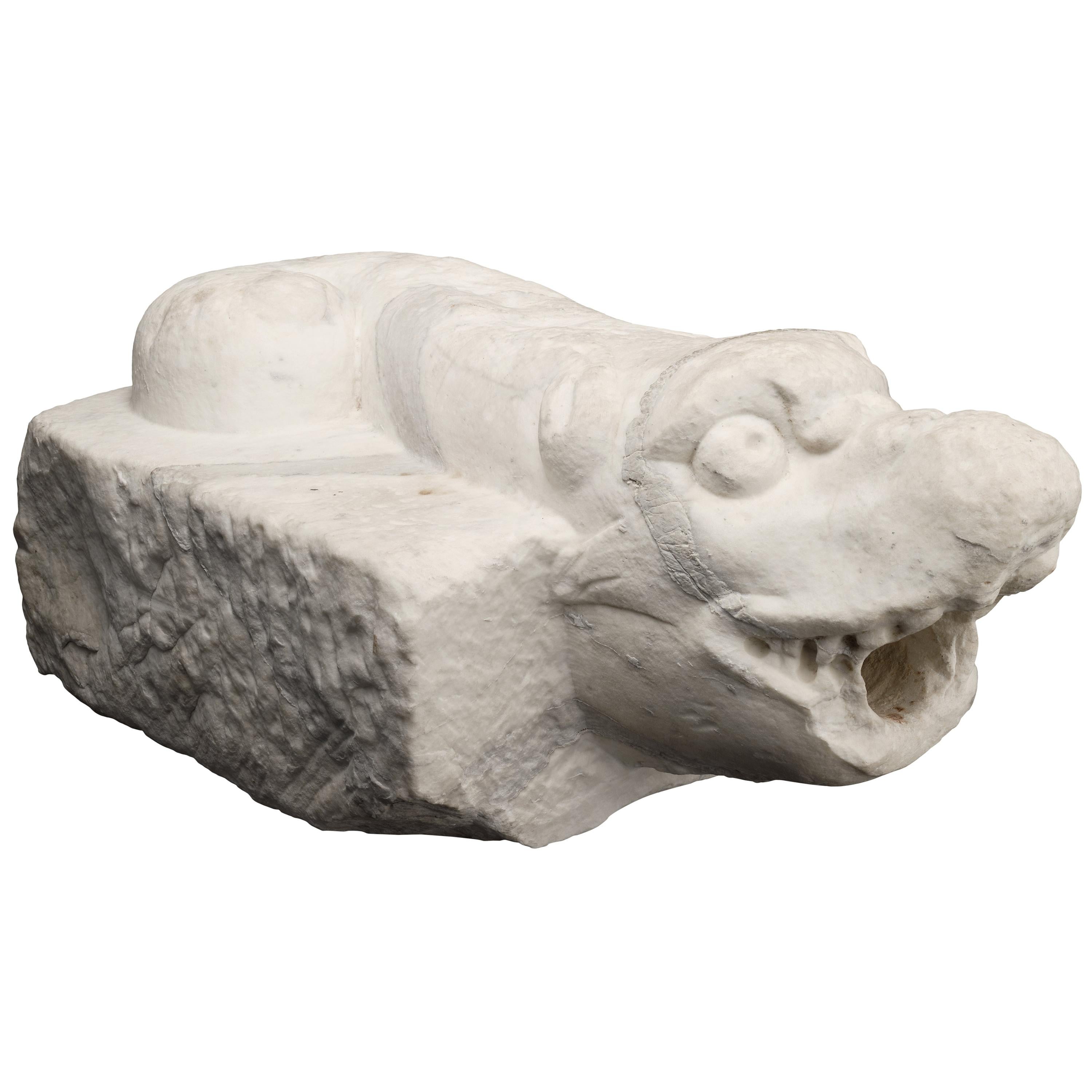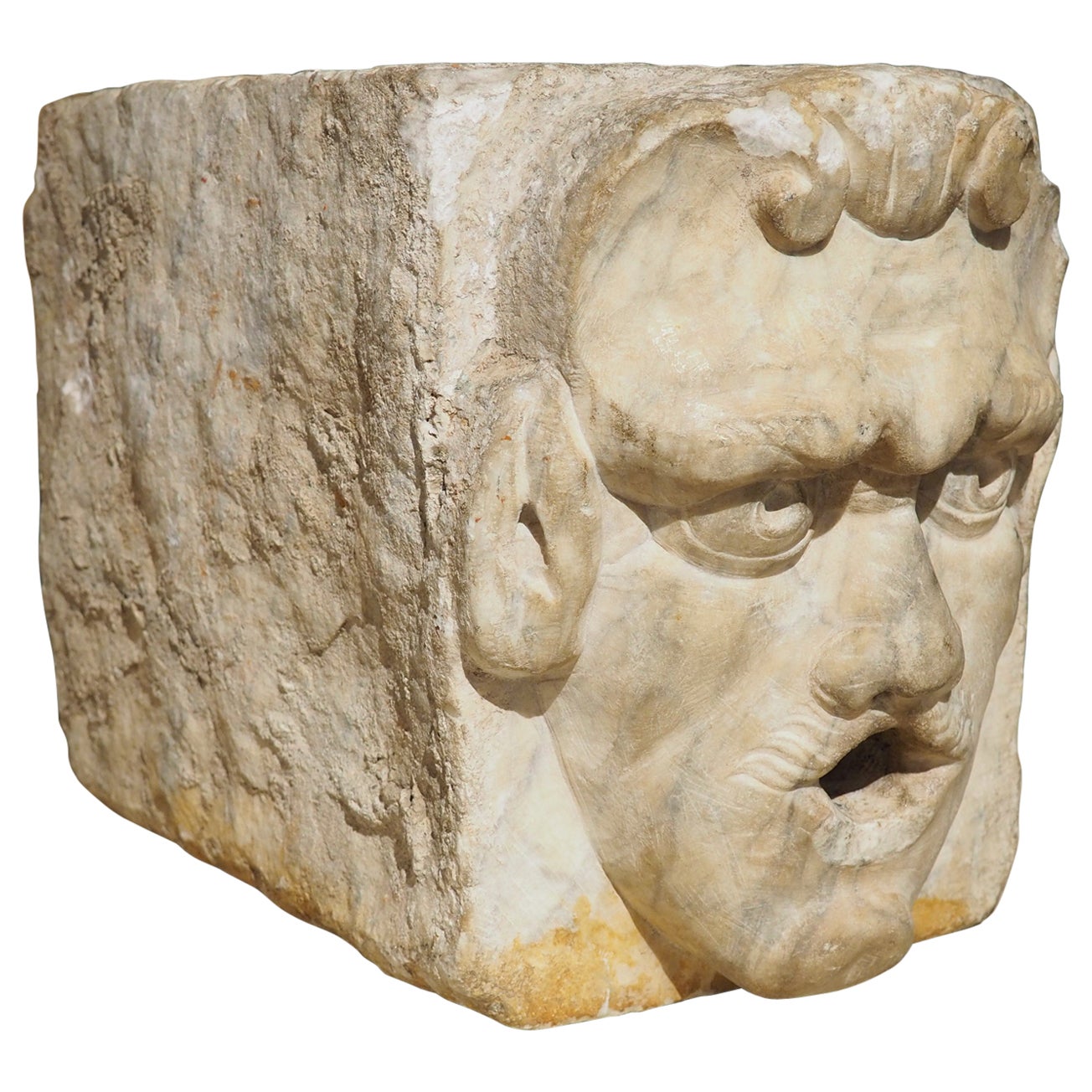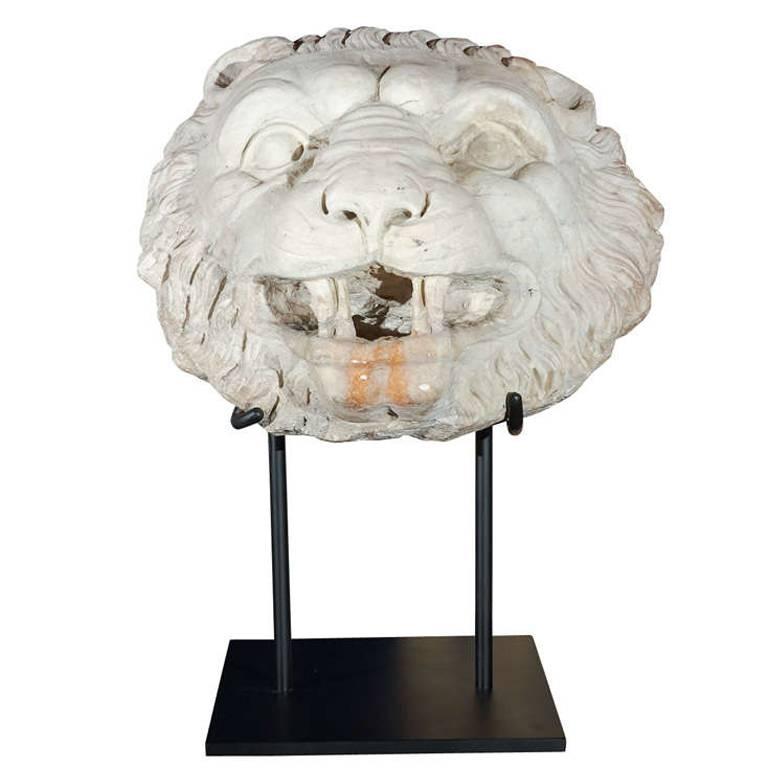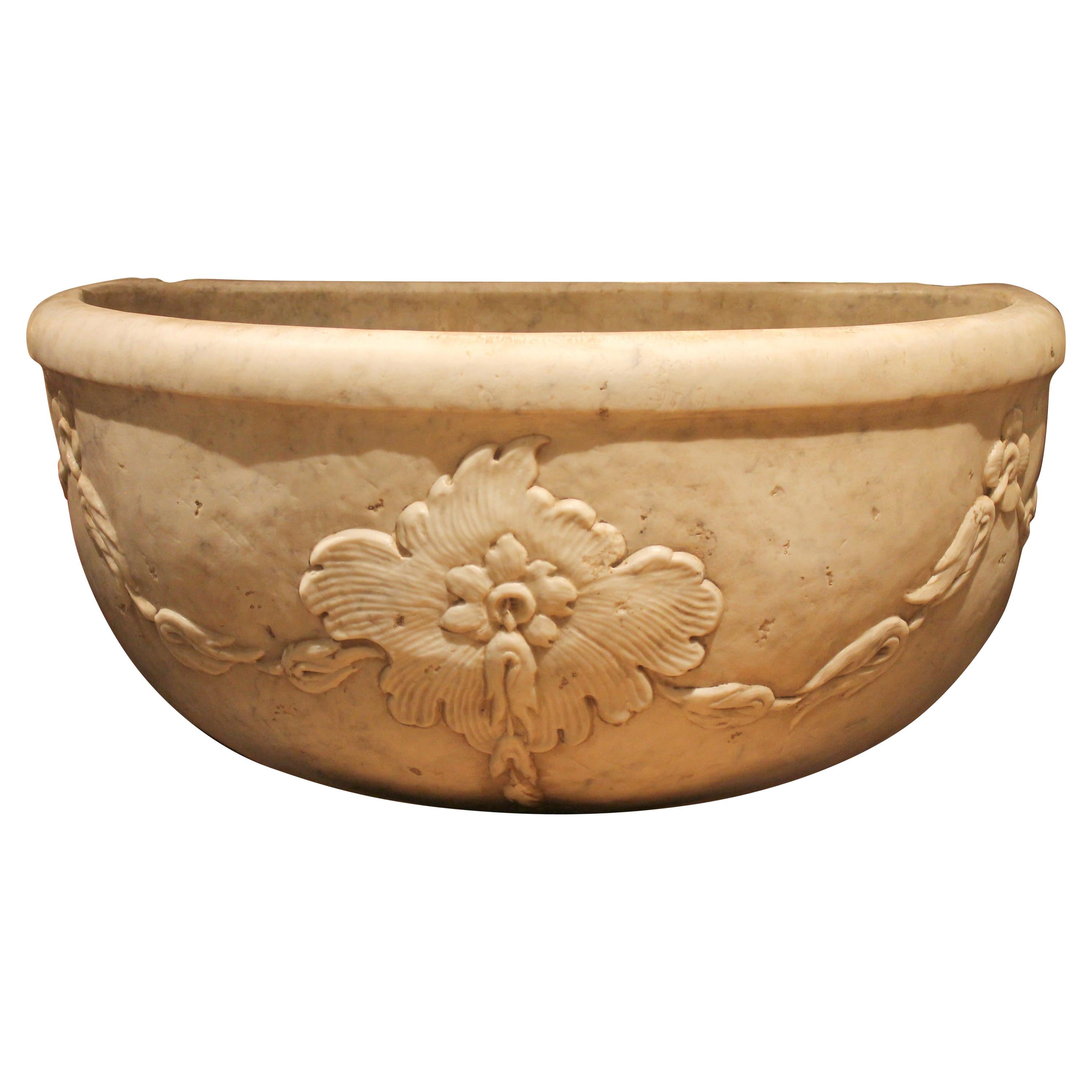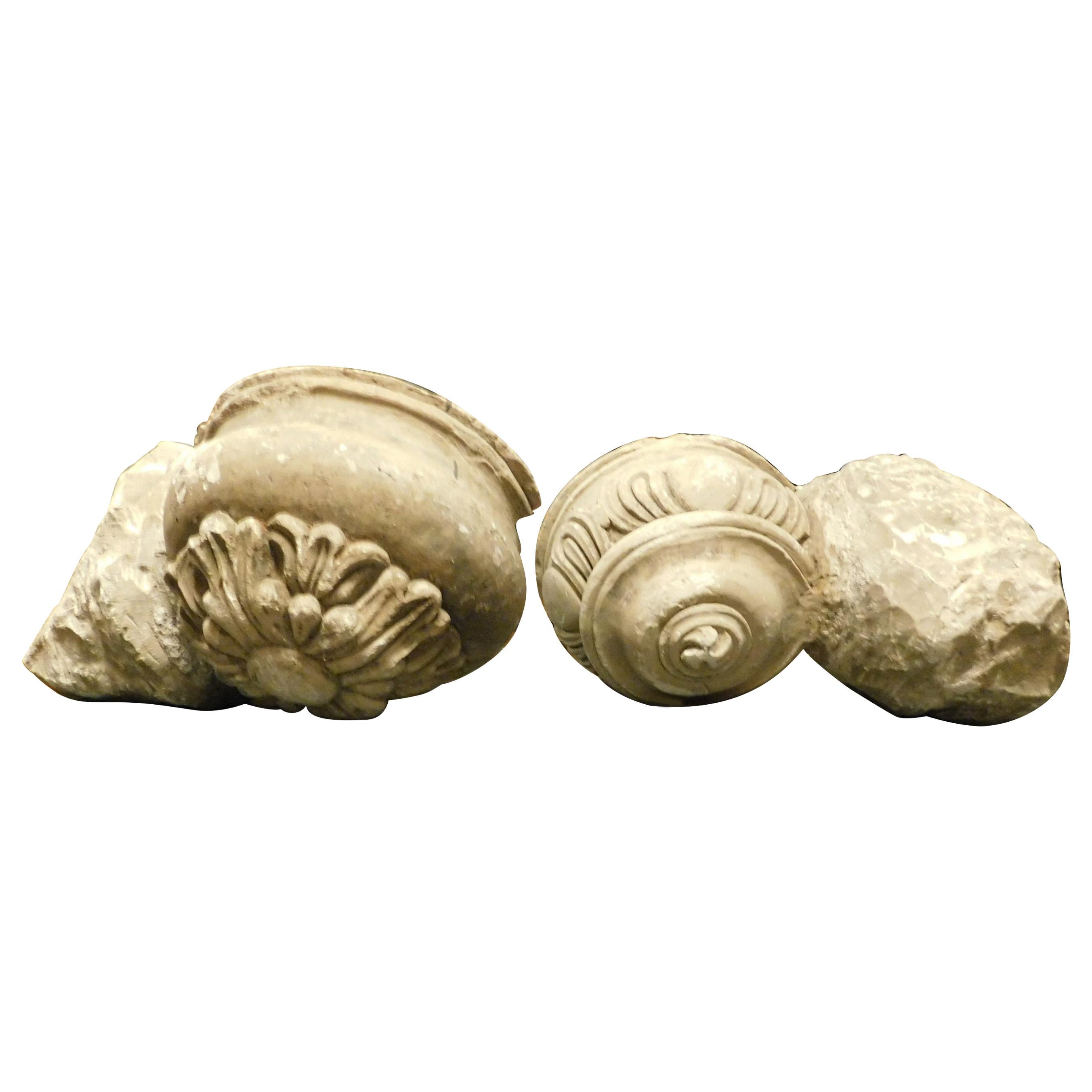Items Similar to Ancient Fountain in Carved and Inlaid Marble, 16th/17th Century, from Sicily
Want more images or videos?
Request additional images or videos from the seller
1 of 8
Ancient Fountain in Carved and Inlaid Marble, 16th/17th Century, from Sicily
About the Item
Antiques fountain in white marble, richly carved and inlaid with "royal yellow" marble in the pedestal and in the basin, upper part with mythological sculpture. Of great stage presence but also very refined. Perfect for indoor or outdoor installations, it can be used as a sink or as a fountain. Recovered from an ancient noble house in Sicily, 5/600th century.
Measurements in cm W 100 x H 185 x D 75.
About the Seller
4.9
Platinum Seller
These expertly vetted sellers are 1stDibs' most experienced sellers and are rated highest by our customers.
Established in 1988
1stDibs seller since 2014
142 sales on 1stDibs
Typical response time: 11 hours
- ShippingRetrieving quote...Ships From: cervasca, Italy
- Return PolicyA return for this item may be initiated within 10 days of delivery.
More From This SellerView All
- Ancient Pair of Stoups, Stone Basins, Drinking Fountains, 17th Century, ItalyLocated in Cuneo, Italy (CN)Ancient pair of stone stoups, usable in many ways, as stone trays, as fountains, as planters or in a prestigious entrance, hand carved between the 16th and 17th centuries in Italy f...Category
Antique 17th Century Italian Stone Sinks
MaterialsStone
- Antique Fountain Basin in Pink Marble with Masheron, '700 ItalyLocated in Cuneo, Italy (CN)Ancient fountain tub in pink marble, complete with an artificial stone mask in the shape of a lion's face, the base is not included because it is not orig...Category
Antique 18th Century Italian Fountains
MaterialsMarble, Concrete
- stone garden fountain with carved putto, ItalyLocated in Cuneo, Italy (CN)Vintage garden fountain, in artificial stone or concrete, carved with putto, basin and pedestal, built in the 1900s in Italy tub circumference measures 60 cm x H 135, base 40 cmCategory
20th Century Italian Fountains
MaterialsConcrete
- Fountain in gray stone, with spout and applied to the wall, ItalyLocated in Cuneo, Italy (CN)Ancient and important wall fountain, richly carved in gray stone, with iron filler, ashlar basin and wall pillar, built for a garden in Italy, in the 19th century, from southern Ital...Category
Antique 19th Century Italian Fountains
MaterialsStone
- Lecce Stone Fountain, Octagonal with Central Pillar and 4 Vents, Italy 1990Located in Cuneo, Italy (CN)Lecce stone fountain, octagonal basin shape and central pillar with 4 outlets, hand built with Lecce stone (Italy) in the 90s. complete and furnished, ...Category
20th Century Italian Fountains
MaterialsStone
- Antique Monumental Fireplace in Carved Stone, 16th Century from Castle in ItalyLocated in Cuneo, Italy (CN)Ancient and important mantel fireplace, of monumental size in stone entirely carved by hand, built in the middle of the 16th century, it comes from a castle in central Italy. Imposi...Category
Antique 16th Century Italian Fireplaces and Mantels
MaterialsStone
You May Also Like
- Italian Ancient Marble Sculpture Fountain, Late 16th CenturyLocated in Milano, ITSea monster Carrara marble mouth fountain Italy, late 16th century It measures 13.8 x 31.5 x 18.9 in (35 x 80 x 48 cm) State of conservation: some small evident gaps and widespread signs of wear due to outdoor exposure. The gray marks crossing it do not come from restoration, but are rather the natural veins of the marble. This work has some morphological characteristics typically associated with the iconography of the sea monster: an elongated muzzle, sharp teeth, protruding eyes, elongated ears, and a coiled serpent's tail. An in-depth series of studies on artistic depictions of the sea monster attempted to verify how this symbol evolved in antiquity in the European and Mediterranean contexts and how it gradually changed its image and function over time. The iconography itself is mutable and imaginative and its history is rich with cultural and artistic exchange, as well as the overlapping of ideas. This occurred so much that it is difficult to accurately pinpoint the "types" that satisfactorily represent its various developments. However, we can try to summarize the main figures, starting from the biblical Leviathan and the marine creature that swallowed Jonah (in the Christian version, this figure was to become a whale or a "big fish", the “ketos mega”, translation of the Hebrew “dag gadol”). Other specimens ranged from the dragons mentioned in the Iliad (which were winged and had legs) to "ketos” (also from Greek mythology), the terrifying being from whose Latinized name (“cetus”) derives the word "cetacean". See J. Boardman, “Very Like a Whale” - Classical Sea Monsters, in Monsters and Demons in the Ancient and Medieval Worlds, in Papers presented in Honor of Edith Porada, Mainz am Rhein 1987, pp. 73-84). In Italy the monster underwent yet further variations: it can be found in Etruscan art on the front of some sarcophagi representing the companion of souls, while among the Romans we find the “Pistrice” (cited by Plinio in Naturalis Historia PLIN., Nat., II 9, 8 and by Virgilio in Eneide: VERG., Aen., III, 427), which appeared in the shape of a stylized hippocampus or a very large monstrous cetacean and evolved into a hideous being with a dragon's head and long webbed fins. During the Middle Ages, the sea monster was the object of new transformations: at this time, it is often winged, the head is stretched like a crocodile, the front legs are often very sharp fins - sometimes real paws - until the image merges with dragons, the typical figures of medieval visionary spirituality widely found throughout Europe (on this topic and much more, see: Baltrušaitis, J., Il Medioevo fantastico. Antichità ed esotismi nell’arte gotica, Gli Adelphi 1997). In Italy during the 15th and 16th centuries, the revival of classicism - representative of the humanistic and Renaissance periods - led to a different reading of these "creatures". Indeed, the sea monster was also to find widespread use as an isolated decorative motif, especially in numerous fountains and sculptures where dolphins or sea monsters were used as a characterizing element linked to water (on this theme see: Chet Van Duzer, Sea Monsters on Medieval and Renaissance Maps, London, The British library, 2013). From the morphological point of view, the "sea monsters" of this period are mostly depicted as hybrid figures, in which the body of a mythological or real being (a hippocampus, a sea snake, a dolphin), is joined to a head with a rather indistinct appearance. It was usually characterized by large upright ears, an elongated snout, sharp teeth and globular, protruding eyes; a complex and indefinite figure, both from the symbolic point of view and from that of its genesis. The work we are examining is placed as a cross between the medieval sea serpent and the Renaissance dolphin, with stylistic features which recall the snake as often used in heraldry (such as the "snake" depicted in the coat of arms of the Visconti - the lords and then dukes of Milan between 1277 and 1447 - and which, for some, may be derived from the representations of the “Pistrice” that swallowed Jonah). In the search for sources, Renaissance cartography and in particular woodcuts should not be neglected. See for example the monsters of Olaus Magnus, from the editions of the “Historia de gentibus septentrionalibus” (“History of the peoples of the north”) and the natural histories of Conrad Gesner, Ulisse...Category
Antique 16th Century Italian Renaissance Animal Sculptures
MaterialsCarrara Marble
- 15th or 16th Century Marble Gargoyle Fountain Spout from Arezzo, ItalyLocated in Dallas, TXAlthough when most people hear the word “gargoyle”, they probably envision small, winged creatures with grotesque visages. However, the phrase has a deeper meaning, encompassing any carved head (animal or human) that function as waterspouts. From the Early Renaissance (late 1400’s/early 1500’s), our gargoyle fountain spout features a human-like face with pointed ears, possibly representing a centaur or a satyr. The roughly rectangular block of marble was hand-carved in Arezzo, in the Tuscany region of Italy. All sides except the front of the cream-colored stone have a sawed finish, resulting in a rough texture. The back has been excavated, adding to the character of the gargoyle. A 1 ½” diameter hole has been cut all the way through, forming an open mouth of the gargoyle. The gaping mouth was often a symbol used to conjure images of devouring giants and used to remind people that they are susceptible to certain forces. Our 15th/16th century marble...Category
Antique 16th Century Italian Renaissance Fountains
MaterialsMarble
- 17th Century, Carrera Marble Lion Fountain HeadLocated in Newport Beach, CAStunning, solid white, Carrara marble lions head from a fountain in Florence featuring a flowing main and a fabulous patina. Mounted on a custom, iron base. The piece hails from the ...Category
Antique Early 1600s Italian Sculptures
MaterialsMarble
- 17th-18th Century Italian Medieval St. Rosso Verona Carved Marble FountainLocated in West Palm Beach, FLAn extraordinary 17/18th century Italian large scale Medieval st. square Rosso Verona marble hand carved fountain. The fountain with its grand scale one piece basin has a mottled bas...Category
Antique 18th Century Italian Medieval Fountains
MaterialsMarble
- Italian 17th Century Solid Hand Carved White Carrara Marble Fountain or BasinLocated in Firenze, ITEntirely hand carved in a solid block of precious white Carrara marble, this antique Italian late 17th century-early 18th century fountain or basin is sculpted with elegant floral and foliate patterns typical of Baroque period of Genoese area. This generously sized half moon basin features a wonderful hand sculpted floral carvings on front, drawing the eye around its satisfyingly smooth arc and its charismatic form, while the back is raw, the ancient hand chisels can still be seen. Even the original iron pins which probably supported a back splash are still visible. It takes a high level of skill to carve such a hard marble into a wonderful demi lune shape such as this. Different shades of white due to varied patina from age allows it to go with practically any color scheme. This antique marble sculptural and architectural piece was originally a garden element, it is now perfect for both indoor or outdoor use. Elevate your interior or your garden to a new level of elegance with this one of a kind piece suitable for both public spaces and private homes. Whether placed in the master bathroom or in a powder room as a wash sink...Category
Antique Late 17th Century Italian Baroque Fountains
MaterialsCarrara Marble
- 17th Century Italian White Marble Baptismal FontLocated in BARCELONA, ESImmerse yourself in the captivating allure of our 17th-Century Italian White Marble Baptismal Font, a remarkable piece that transports you to the...Category
Antique 17th Century Italian Fountains
MaterialsMarble
Recently Viewed
View AllMore Ways To Browse
Marble Pedestal Sink
Marble Fountain Head Lion
Stone Firepit
Antique Drill Bit Set
Outdoor Birdbath
Pink Bathtub
Antique Dolphin Sculpture Stone
Antique Wall Faucet
Antique Wall Faucets
Huge Hillside
Carrera Marble Antique Basins
Italian Masheron
Ruth Planter
Seasonal Wall Plates
Ultima Edizione On Sale
Volcanic Fountain
Emerald Green Glass With24k Gold
Hamam Sink
